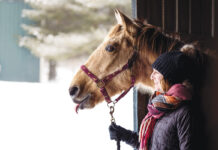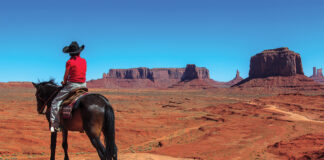A few years ago, I was sitting in a coffee shop, enjoying the company of my laptop and a chai latte, when I found myself distracted by what appeared to be a blind date at the next table over. It was not going well. The young man seemed to be delivering a train-of-thought monologue in which he spoke only of himself. At one point, he mentioned that he played football, but then stopped himself.
It was silly at best and patronizing at worst, and shortly thereafter they ended their date with a handshake and went their separate ways.
Bear with me. I’m bringing this back around to horses, I promise.
We Americans know that pretty much the rest of the world calls the sport football, and we just don’t seem to care. We appropriated that name for some other sport, and so the sport formerly known as football is now and forever soccer here in the states. I came across an article this morning that explained the history behind the names of both sports, and that article suggests that the “foot” in “football” isn’t referring to the method by which the ball is moved around the field, but the mode of transportation used by the players — by foot instead of horse.
That’s one theory, but one that appears not to be backed up by the article’s source material. Nevertheless, it made me curious about what kind of ball sports are played on horseback.
Polo
Polo, of course, is the best-known equestrian team sport. Early polo-type games were played as far back as far as the 6th century BC in Persia. Fast forward a bunch of centuries to the 1800s, and you’ll find a game called Pulu in India. British soldiers there discovered the sport and brought it back to their countrymen, who then spread it around the western world. The sport has maintained its popularity in Great Britain, parts of East and Southeast Asia, and several South American countries.
Horseball
Horseball is kind of an up-and-comer in the equestrian world and will be featured as an exhibition sport at this year’s Alltech FEI World Equestrian Games in Normandy. The game is something like a combination of rugby and basketball on horseback. Players score points by throwing a six-handled ball through the other team’s goal—a vertical hoop. If the ball is dropped, players can lean off the side of their horse to pick it up by one of the handles, but they can’t come to a complete stop as they do so. Horseball has been referred to as “Quidditch on horseback” even though there’s no flying involved, nor is there a golden snitch.
Pato
Pato is a predecessor of horseball, played in Argentina. It’s called pato, the Spanish word for duck, because instead of a ball, they originally tossed around a live duck. Yikes. They don’t do that anymore, and now it’s basically horseball. Pato has been around since the early 1600s, but appears to be pretty limited to Argentina throughout its history.
Polocrosse
Polocrosse, a combination of polo and lacrosse, is a mounted game you may be familiar with if you were ever a Pony Club member. It was inspired by exercises created at the National School of Equitation near London to improve young riders’ skills in the saddle. Australian horse breeders Edward and Marjory Hirst used those exercises to create a new sport in the 1930s. It was intended to be a game for all ages, although in the U.S., participation seems to be centered on the Pony Club set.
Horse Soccer
And then there’s equine soccer. Using very large and durable soccer balls, players maneuver their horses to kick the ball into the opposing team’s goal. I’d like to propose a tag line here. “Equine Soccer: It’s pretty much just what it sounds like.” There is an America’s Equine Soccer League which promotes organized matches. You can ride a Thoroughbred. You can ride a mule. Dressage saddle, western saddle, curb bit, hackamore, whatever. This sport doesn’t seem to have a lot of unnecessary regulations. I hope it makes it to the 2018 World Equestrian Games.
Back to The Near Side
Follow Leslie on Twitter: @LeslieInLex






cool
Sounds like fun.
cx
Love it!! Great Pictures, and sure looks like they, both horses and riders are having fun.
cool didn’t know there were so many polo lacrosse soccer equine games